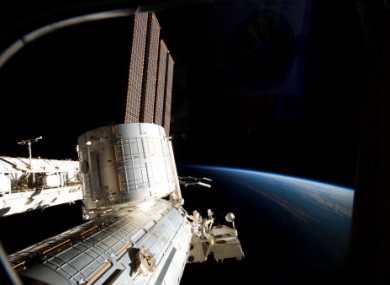The nine worst county councils in Ireland’s planning system
The national heritage organisation An Taisce has rated 34 city and county councils on their planning systems – and given NINE of them an ‘F’ grade, branding them the “worst councils in Ireland’s planning system”.
The councils given the lowest grade are Donegal, Roscommon, Leitrim, Kerry, Mayo, Galway county, Cavan, Carlow and Waterford county.
- Read the full report below:
- The body used eight criteria to come up with the grading. They were:
- Overzoning: Amount of zoned land as a percentage of population in 2011
- Decisions reversed by An Bord Pleanála 2005-2010
- Decisions confirmed by An Bord Pleanála 2005-2010
- Percentage of vacant housing stock in 2011
- Change in vacant housing stock 2006-2011
- Water quality: Urban areas with secondary treatment failing to meet GPA standards 2011
- Percentage of one-off houses permitted as a percentage of all residential planning permissions 2001-2011
- Legal proceedings commenced following non-compliance with enforcement notice 2005-2010
DONEGAL was found to be the worst overall. An Taisce – which says it is concerned with “conserving the best of Ireland’s heritage, both built and natural” – had strong words for the local authorities in the northwestern county:
By way of illustration of its poor performance, Donegal had approximately 2,250 hectares of residential zoned land in 2010, sufficient for an additional population of 180,000 people. Despite this, approximately 50 per cent of all residential planning permissions in Donegal over the past decade were granted on unzoned land. These trends are symptomatic of a wider systems failure in which counties Donegal, Roscommon, Leitrim and Kerry perform worst.
The report from An Taisce mentions the Mahon Tribunal’s final report which recommended that there be an independent planning regulator “free from political pressure”. An Taisce said it agreed with this recommendation and with one that said the National Spatial Strategy and future National Development Plans must be given proper legislation.
An Taise also said that enforcement of planning laws must be “urgently improved” (and overseen by the aforementioned independent planning regulator”, that there be a regional governance structure for planning and that there be “serious reform of local authority structures” to bring back trust and accountability.
This was the strong statement from An Taisce about the wide-ranging effects of bad planning decisions:
Bad planning is not victim free. The analysis shows that there is a very strong correlation between councils that have scored poorly and a range of negative socio-economic and environmental outcomes. For example, councils which scored poorly generally had the highest rate of residential vacancy, the highest rate of population decline and out-migration, the highest levels of unfinished ‘Ghost Estates’, lower residential property prices and significant instances of ground and surface water pollution.
These legacy costs of bad planning will affect people living in these areas, and Irish society as a whole, for many generations.
This table shows the scores of all 34 councils for planning decisions. Only three of them scored over 70 per cent. No council achieved an A or B grade. Only four got a C grade – South Dublin, Dun Laoghaire-Rathdown, Galway City and Fingal.
Thirteen councils got a D grade, 8 got an E grade, five got an F grade while four, as mentioned above – Donegal, Roscommon, Leitrim and Kerry – got an F- grade.


The ISS Space station should be visible tonight from the Irish skies

left photo part of the ISS and Earth a photo from the spacecraft.
So long as the clouds stay away tonight, there’s a good chance you can watch the International Space Station as it passes over Ireland.
At roughly the size of Croke Park, the ISS is the largest-ever spacecraft sent into orbit and it circles the planet at about 350km above the Earth’s surface.
Astronomy Ireland chairman David Moore says that the ISS will be the brightest object in the night sky and should be visible in the southern sky at 10.34pm tonight. The spacecraft will travel over Ireland until 24 April.
For the past ten years, the ISS has been constantly manned. Its crew is repeatedly being replaced with cycles of new members; the departing and arriving teams overlap on board for a period between changeovers.
Half of those on board right now arrived at the ISS in mid-November and are due to return to Earth later this month, landing on 27 April. The three other astronauts joined them in December, and they will return home on 1 July.
Russia’s Soyuz rockets have been relied on as the main transport link between Earth and the ISS for both personnel and supplies following the end of NASA’s space shuttle programme last summer.
The six people on board the ISS are supported by around 100,000 people on the ground and 16 countries have been involved in the project.
There is a reinforced section on board the ISS for the crew to huddle in for safety during solar storms or if the ISS is passing through space debris.
No comments:
Post a Comment